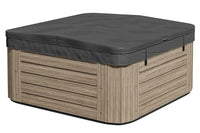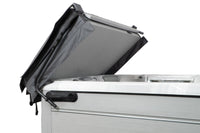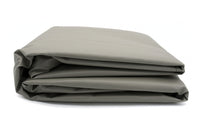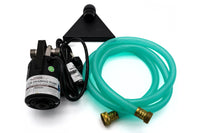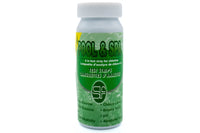Looking to make the best summer for your spa? Here are ten common hot tub problems you will want to check for before performing routine maintenance this season. Proactive solutions can protect your spa from long term damage and save money on maintenance. From clogged filters to water balance problems, we cover the most frequent issues that prevent your hot tub from running smoothly and efficiently. Follow our guide and get the most out of your spa this summer!

1. Water Chemistry Maintenance
When you talk about hot tub problems, water chemistry maintenance tops the list as the most frequent issue. This is the most common hot tub problem and arguably the easiest to fix!
When you open your hot tub cover the first check you want to make is the water cleanliness, checking for algae, mold, and bacteria. Maintaining a healthy water supply will prevent further damage to the hot tub cover and filters. If you have a dirty tub, don’t fret! In most cases it can be made clean again by applying sanitizer or draining the tub completely. It’s a great idea to test your hot tub water often, we find the 4 in 1 test strips to work the best. There is a 4 in 1 Bromine Test Strip and a 4 in 1 Chlorine Test Strip depending on the sanitizer of your choice.

If you think your water is compromised, make sure to follow our hot tub water maintenance checklist here.
2. Hot Tub Error Code Issues
Error codes can indicate hot tub problems but these codes can be confusing and seem like a lot of work. If your hot tub is speaking in another language, check out our comprehensive guide to cover all the error codes for the top brands. Just select the manufacturer link from the list below and search for your error code!
Error Codes & Information:
Beachcomber
Arctic Spas
Jacuzzi®
BullFrog
Leisure Bay Spas
Cal Spas
ACC
MAAX
QCA
3. Tripped GFCI/RCD Breakers
The ground fault circuit interrupter (GFCI) or residual current device (RCD) protects your spa from the event of any electrical fault that could cause electrocution. The device shuts off when it detects electrical current flowing along an unsafe path. Often these devices are set to be incredibly sensitive to even the lowest of electrical currents for safety reasons. Unfortunately this can also result in the breaker tripping for even the smallest of issues, such as water in the ozonator.
4.Clogged Filter
Proactive maintenance will prevent clogged filter issues such as grime, dirt and blockages. The key to a healthy spa after water maintenance is a clean filter. Body oils and residue can cause blockage and require a de-greasing agent. When this blockage occurs you will most likely receive a error code on your topside control like FLO. This means water cannot effectively flow through a dirty filter and often your hot tub will shut down. Also as a filter becomes dirty contaminants will not be removed, leading to other problems (such as water chemistry issues) that will damage the pump and hot tub cover. Setting a schedule to keep your filter clean is the best way to avoid issues. Replacement filters may be necessary to restore the health of your spa. For a comprehensive guide to knowing when to replace or when to clean a filter, check out our hot tub filter maintenance guide.

5. Heater Failure
If your spa is having issues getting warm, it could be a heater failure! Most failures are due to heating element corrosion. This can be caused by low ph in the water supply. Low PH (below 7.0) for an extended amount of time will cause damage to the heating element and trip the GFCI breaker. Most issues can be avoided with proper water chemistry maintenance. Troubleshooting for heater failure includes checking the filter and thermostat for damage.
6. Leaky Seals
If you are having water chemistry issues checking for leaky seals can save time and money. Replacing old o-rings, pump seals and ensuring that the filter is clean is the best way to avoid leaky sealing. Unchecked, you may find that water leakage and buildup is occurring around the spa equipment that can cause an electrical short. For more details and information on fixing a leaky hot tub, check out our leaky hot tub troubleshooting guide.
7. Malfunctioning Pump
Humming or hammering noises coming out of the hot tub are a good indicator of a malfunctioning pump. Worn out bearings, broken seals, or leaky water are all signs of caution. This is not the type of hot tub problems that you want. It is a good idea to try and stay ahead of these issues with monthly or yearly maintenance to these areas. For more information on troubleshooting your pump without breaking the bank, our pump replacement guide has you covered.
8. Hot Tub Line Leaks and Weak Jets
As mentioned previously, hot tubs are very sensitive to poor water chemistry. If the PH balance is not corrected it is likely that silicone corrosion will occur, causing weak jets and line leaks. The best way to avoid this is to winterize your spa correctly, cleaning each jet line and fully draining the hot tub before closing it for the season.
9. Poor Water Circulation
Poor water circulation can be caused by not running the pumps long enough. For optimum flow, you should run your pumps for one hour for every 10 degrees of temperature. Water chemistry problems (PH imbalance) causes corrosion on the pump seals and negatively affects circulation. The better that the water is circulating the cleaner the spa, so make sure to check filters and wipe the spa walls for grime to prevent biofilms from growing and clogging the lines.
10. Circuit Board Malfunction
A burnt-out circuit board can be a costly repair, and is the ultimate consequence of poor hot tub maintenance. Routine maintenance is the best way to avoid expensive issues such as circuit board malfunction. Loose heater terminal connection screws can vibrate over time and loosen the connection with the heater, resulting in damage to the circuit board. The board builds up heat and is overloaded, causing in irreparable damage and an expensive replacement. Components failure is marked by burn marks, cracks or melting. Most systems will generate an error code if the circuit board is having issues.
Future-Proof Your Spa
If there is one common denominator for all of these long term hot tub problems, it is that proper water maintenance is key if you want to save on costly repairs. The fact is, most if not all of these common problems can be avoided! If your hot tub is accessible to outdoor critters or rodents, make sure you check for frogs, bees, or mice who may want to take a plunge into your spa. Frogs are attracted to the heat of your spa and can get in if the spa is improperly covered. Sensitive wiring can be chewed out by mice if they decide to move in, start a family and call your hot tub their home. By maintaining a healthy PH balance and performing routine maintenance on your spa you can save money and time on repairs.
Routine Check-Ups!
Routine check-ups for breaches in the hot tub shells or nearby nests will ensure no long-term damage is done by the intruders. The best way to keep pests out is to maintain healthy water chemistry and keep your cover sealed tight!
For premium spa products and water cleaning supplies to avoid corrosion, circulation issues and bacteria growth check out our selection of hot tub chemicals.

